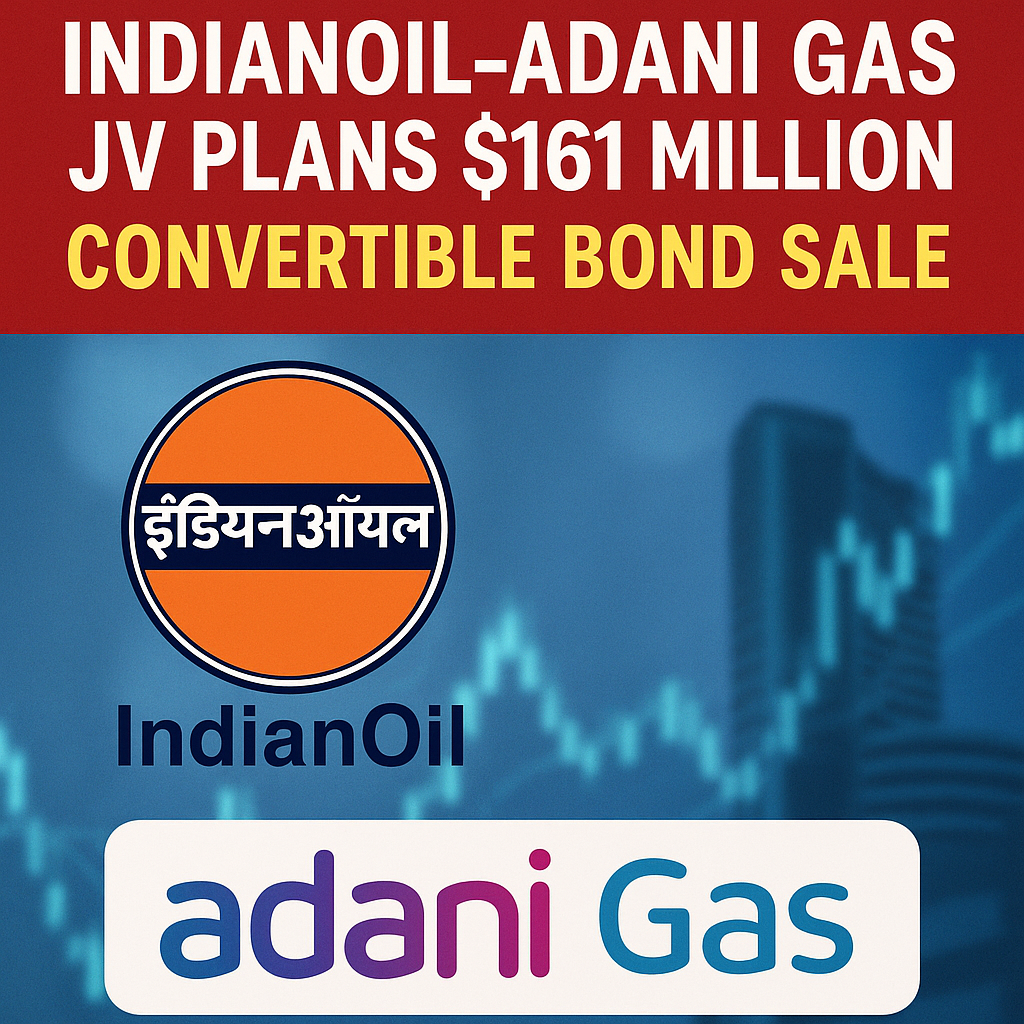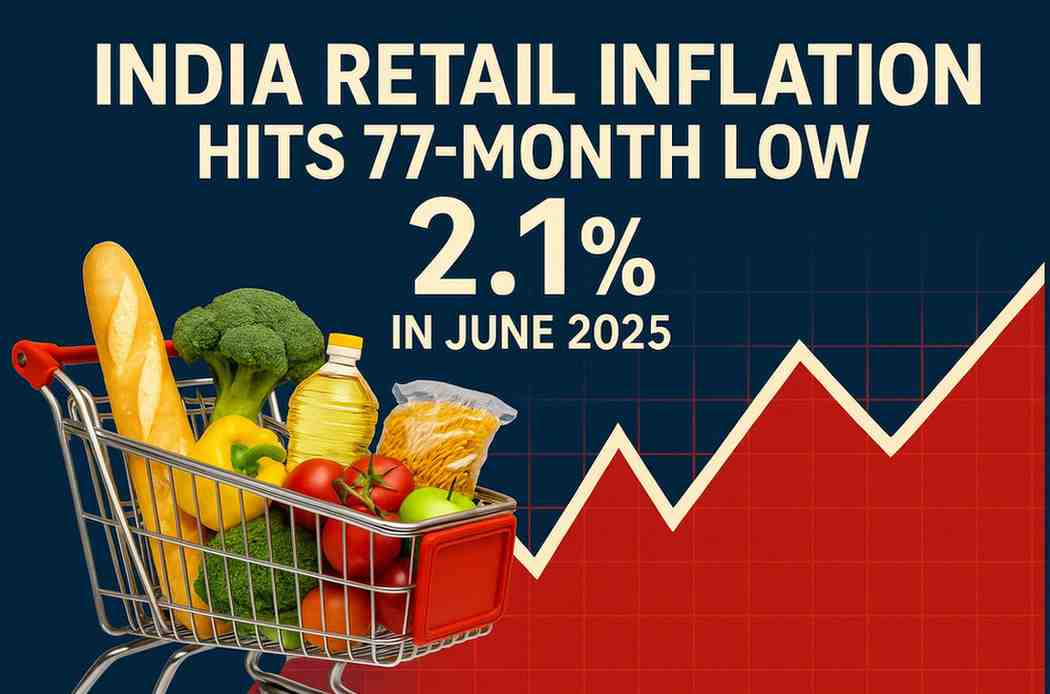-
Algos
-
Stocks
-
Trading
-
Strategies & Arbitrages
-
Mutual Funds

In a move that signals growing confidence in hybrid financial instruments, IndianOil-Adani Gas Pvt. Ltd., a joint venture between Indian Oil Corporation and Adani Total Gas, is set to raise Rs 1,378 crore (approximately $161 million) through the sale of compulsorily convertible debentures (CCDs). If successful, this transaction will mark one of the largest hybrid capital-raising deals in India this year, second only to Adani Transmission’s Rs 900 crore CCD issuance earlier in March.
The fundraising plan underscores a strategic approach to financing long-term infrastructure while mitigating immediate equity dilution. With India aiming to expand the share of natural gas in its energy mix, this capital infusion could be crucial in supporting the government’s clean energy ambitions and the JV’s growth trajectory in the city gas distribution (CGD) sector.
According to individuals close to the matter, IndianOil-Adani Gas plans to execute the deal in four tranches:
Each of these instruments will be compulsorily converted into equity at the end of their respective terms, giving investors potential upside exposure to equity performance, while providing the company with much-needed growth capital in the interim.
The CCDs are expected to be market-linked in terms of interest rates and are being arranged by SBI Capital Markets Ltd.. The deal could close as early as this month, pending final approvals and investor interest.
Compulsorily convertible debentures are hybrid securities that blend characteristics of debt and equity. Initially structured like bonds, they carry a fixed tenure and may offer periodic interest payments. However, unlike traditional bonds, CCDs automatically convert into equity shares at a predetermined date or upon meeting specific conditions.
For companies like IndianOil-Adani Gas, this instrument offers a critical advantage: access to capital now without diluting existing shareholders immediately. In a market environment marked by volatility and fluctuating valuations, CCDs provide a way to lock in capital while deferring equity conversion to a potentially more favorable time.
This approach reflects a broader trend across Asia, where convertible instruments are gaining popularity amid high interest rates and growing investor appetite for instruments that blend stability with equity-linked upside.
This capital raise comes at a pivotal moment. The Indian government has laid out a roadmap to increase the share of natural gas in the country’s energy mix from the current 6% to 15% by 2030. To meet this ambitious goal, companies across the gas value chain need to scale up infrastructure, improve delivery networks, and optimize capital structures.
IndianOil-Adani Gas, which is responsible for delivering piped natural gas (PNG) to industrial, commercial, and residential sectors, as well as compressed natural gas (CNG) to the transport segment, is well positioned to benefit from this national push.
By raising funds now, the company can accelerate investments in CGD infrastructure, expand into new geographical areas, and enhance customer reach.
Despite challenging macroeconomic conditions and volatile energy prices, IndianOil-Adani Gas managed to report resilient financial performance for the fiscal year ending March 2024:
While revenue pressures persisted, improved operational efficiencies and a leaner cost structure appear to have supported profitability.
In October 2024, Crisil Ratings upgraded its rating on the company’s long-term bank facilities to AA-/Stable, citing:
These fundamentals likely improved the company's credit profile, making it an attractive candidate for structured finance instruments like CCDs.
The proposed CCD issuance follows on the heels of a Rs 900 crore offering from Adani Transmission’s ATL HVDC project earlier in March. Hybrid instruments like CCDs and optionally convertible debentures (OCDs) are increasingly becoming tools of choice for capital-intensive businesses operating in regulated sectors.
Investor appetite has grown as well, with market participants seeking alternatives to pure equity or high-yield debt in a high interest rate environment.
For IndianOil-Adani Gas, the timing of this issue could offer a strategic window to lock in capital before monetary conditions shift or broader geopolitical dynamics affect investor sentiment.
The CCD issuance aligns with the broader Adani Group strategy of tapping structured instruments for funding long-gestation infrastructure projects. The group has leaned on a mix of public offerings, private placements, and convertible securities to maintain liquidity across multiple entities without overwhelming equity markets.
Following controversies in early 2023 and a series of credit assessments, the group has been cautious yet innovative in funding expansion. The latest move by IndianOil-Adani Gas shows a return to proactive capital structuring and may serve as a confidence signal to investors.
While CCDs offer structured returns and future equity upside, they are not risk-free. Investors must consider:
Nonetheless, for long-term institutional investors seeking exposure to India’s energy transition, these CCDs could be an attractive instrument—balancing downside protection with participation in potential equity value creation.
With the fundraising likely to close in July, the next key developments to watch include:
If deployed effectively, the proceeds can reinforce IndianOil-Adani Gas’s position as a key player in India's CGD sector.
IndianOil-Adani Gas’s plan to raise Rs 1,378 crore through CCDs is more than just a financial maneuver—it’s a strategic bet on India’s energy future. As natural gas takes center stage in the country’s decarbonization strategy, companies like this JV must expand rapidly and smartly. The chosen fundraising route allows just that—capital today, equity tomorrow.
With a robust operating base, an improving credit profile, and rising demand for natural gas, the JV seems well placed to ride the next wave of India’s energy transformation.

India's retail inflation hit 2.1% in June 2025, a 6-year low, driven by food prices. Learn what the latest CPI data means for future RBI rate cuts.

SEBI's massive crackdown on HFT giant Jane Street over its "dual-entity" model is forcing a rethink for global trading firms operating in India.

NSDL & CDSL add proxy advisor votes to e-Voting, helping retail investors make smarter decisions and boost governance.

The Indian rupee dipped to 85.70/USD as investors await U.S. jobs data and a looming trade deal deadline, yet near-term volatility expectations remain steady.

The Indian rupee edged down to 85.7025 against the dollar as traders wait for U.S. data and a July 9 tariff deadline. Despite the risks, near-term volatility metrics remain muted—here’s what it means for markets.

India attracts over $1.2 billion in foreign flows in two weeks, with ETFs like iShares MSCI India ETF dominating. Traditional long-only funds see outflows.
